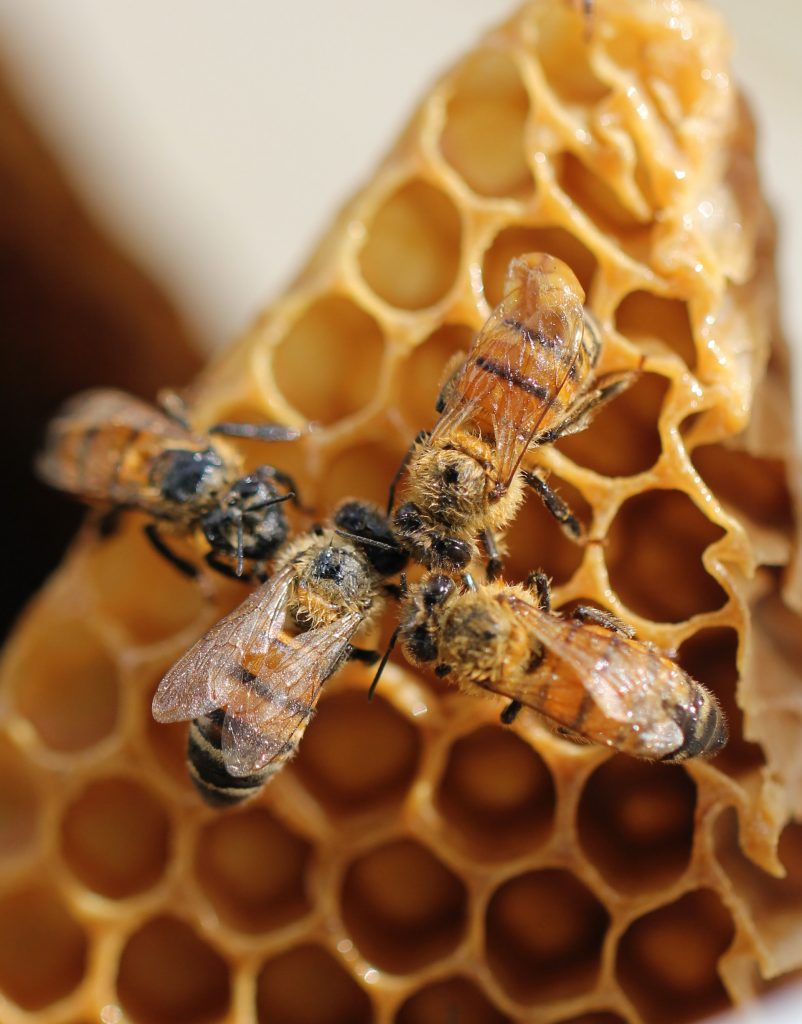
June already and though we may have been concerned about the virus our bees have been getting on with the business of breeding and creating stores.
Most of the tasks for this month are based on the fact that it takes 6 weeks for an egg to become a worker. There should a considerable flow of pollen and nectar in July. So that the hive can take maximum advantage they need a lot of workers. During June the queen could be laying up to 2000 eggs per day.
At that rate of laying we should be making weekly inspections when we are looking for:
- Swarming preparations.
- Varroa levels.
- Sufficient stores
- Sufficient brood space
- All development stages present
Swarming Preparations: One of the early signs of preparations to swarm is the creation of queen cups in the brood chamber. In addition try to think like a bee - is the hive too crowded? - is there enough space for more egg laying?
Varroa Levels: Each cell which contains a developing worker can also harbour up to 4 varroa mites. If it a drone cell then it can harbour up to 5 varroa mites. This is a time of year when you should be checking for varroa mite and taking action if required.
Sufficient Stores: Are there sufficient stores for the growing population in the hive? As I write this the temperature outside is about 20C and has been for some time. However by next weekend the temperature is expected to drop to nearer 12C. That is a big drop and the bees will be less enthusiastic to forage. Couple that with the "June Gap" between the spring flowering plants and the summer flowering and the fact that you may have taken away some of their stores and you could be looking at a hungry hive. If required you may have to feed them with syrup.
Sufficient Brood Space: There will be considerable demands on brood space and it may be necessary to add a second brood chamber.
One approach is to place a super on top of the brood chamber and under the queen excluder. This is known as running on "a brood and a half". There are many discussions of whether the new brood area should be put above or below the existing brood box. Personally I always put it above the existing brood box. This is easier for me and is less disruptive to the hive. It also makes it easier to remove if later in the year you wish to go back to a single brood chamber.
All development stages present: Are all brood stages present in the brood chamber? I have kept bees for many years but I have never yet seen an egg in a cell! I suspect my eyesight rather than incompetence on either my part or the queen's. However using your mobile phone, possibly with a supplementary lens you may be able to see them.
I look for the larval stages and if they are present then I am happy that the queen is present and laying. If they are not present then she may have swarmed and for the time being you have a queen-light hive. If there are eggs present then the workers should be able to rectify this situation.
June is a busy month both for us and the bees. When doing the hive inspection see if there are any signs of the notifiable diseases such as European Foul Brood or American Foul Brood.
Though these are difficult times the bee inspectors are still working and if you are in doubt then contact your local bee inspector and ask their advice.

